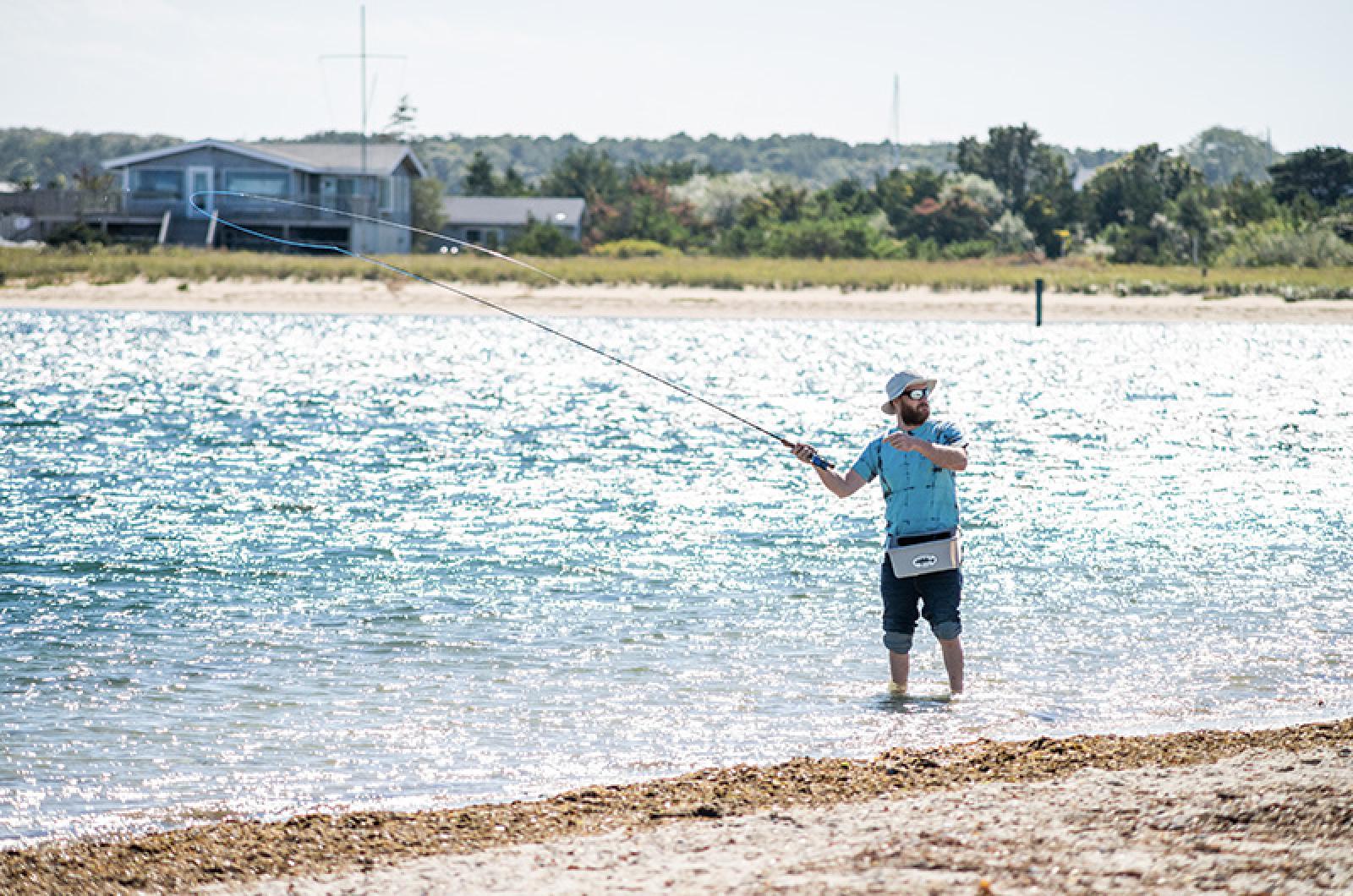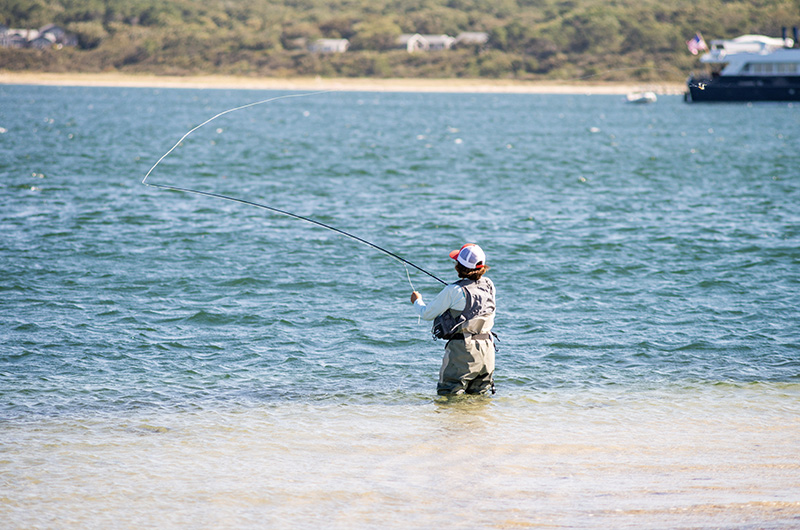Fly fishing won’t usually land a fisherman at the top of the all-tackle leaderboard in the derby, but it is a category all its own for beauty and bragging rights.
Out on the water, the rod, line, fly and fish all blur together into a single salty assemblage. At least that is what it looks like when done well, but it isn’t easy.
To cast and control a fly lure the weight of a feather out on 40 feet of line is perhaps the most active and challenging way to fish, said David Nash, an Edgartown fly fisherman and derby committee member.
“Your body has to become one with the rod,” he said recently, while helping out at the weigh station. “It’s all about keeping in touch with the line.”
Kib Bramhall, an Island artist who has been fly fishing on-Island for over 40 years, agreed.
“The personality of a fly fisherman manifests in a desire to master a very difficult process,” he said.
Mr. Bramhall had been fishing conventionally since 1940 when he was seven years old, but by the time the 1970s rolled around he found himself wanting a larger challenge and so turned to fly fishing.
In those days, Mr. Bramhall said, saltwater fly fishing was less popular in New England due to a general lack of quality, affordable equipment. The sport got a big bump, he said, by its portrayal in the 1992 film A River Runs Through It, directed by Robert Redford and starring Brad Pitt. From then on it exploded.
Though Mr. Bramhall has previously made numerous splashes with his fly-rod derby catches (along with all tackle successes too) he has yet to submit any catches this year, though he says that may change any day now.
Abbie Schuster, avid fly fisherman and owner of Kismet Outfitters, said she has spent most of the derby this year as a guide to other fly fishing enthusiasts. On Friday night, her client Fred Hoffman brought in an 8.62 lb., flyrod-caught false albacore. She said the wind (a frequent morning topic of conversation at the weigh station) has made for good albie fishing, despite making fly casting more difficult.
“Albies are so spooky,” said Ms. Schuster. “You’ve got to be patient with albies, because they are tricky, and they are picky.”
Critical to the arsenal of the fly fisherman is the fly itself (if you call it a lure, a fly fisherman will surely arrive to correct you). Each fly is an artwork in miniature, a vibrant puff of colored hair, shimmering ribbon and fluorescent eyes.
The making (or tying) of flies is a craft all its own, a specialty of Cooper Gilkes III, owner of Coop’s Bait and Tackle.
“It’s a way to escape, to be in a place you can mellow out,” said Mr. Gilkes.
He has found the process to be equally engrossing to the many students he has taught over the years and recalled a lesson when an entire classroom of young students went completely silent while tying.
“It was amazing how much the kids got into it.” he said.
Mr. Gilkes has also passed on much of his fly tying wisdom to longtime employee Jackson Cooper Fersen (who at the store goes by Little Coop, despite his considerable height advantage over the elder Coop).
Sand eel flies, with their slim epoxy bodies and flittering fiber tails, a mix of hair and ribbon, are some of the most successful flies, Little Coop said. “They are like the candy of the ocean."
Many fly fishermen, said Coop the elder, like to make their own flies and most remember the first one they created and succeeded with.
For Little Coop it was a squat epoxy minnow with a burst of white buck hair.
Abbie Schuster was nine when she cast a tan and white Clouser off Big Bridge and brought in a striper.
For David Nash, it was an albie, caught with a streamer with four white feathers, a thin braid and a red stripe.
And for Kib Bramhall it was rough-tied white deceiver fly he created back in ‘79.
“Its kind of an unforgettable experience,” Mr. Bramhall said. “It’s about thinking like a bait fish.”









Comments (3)
Comments
Comment policy »